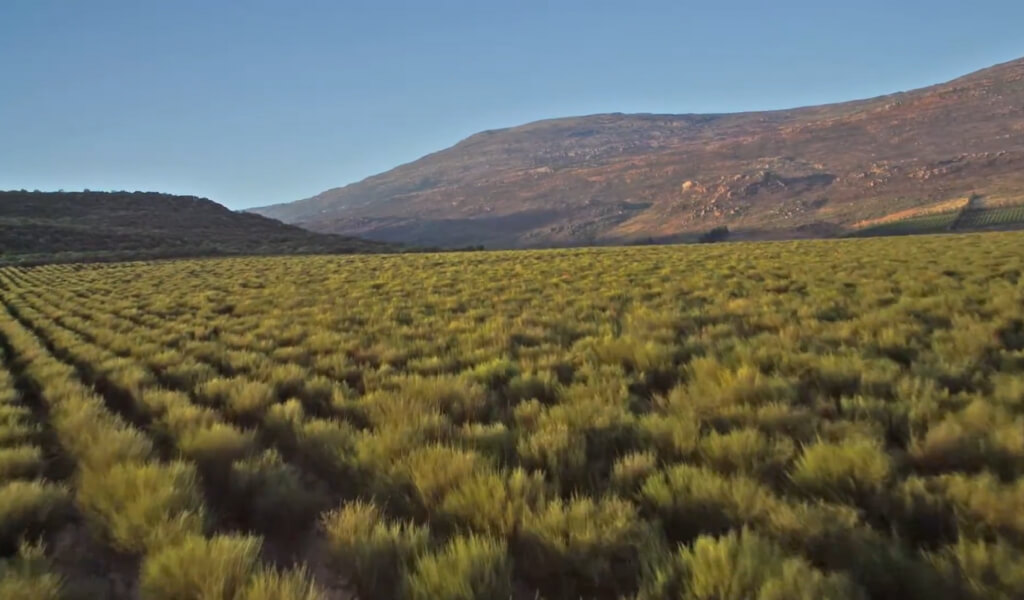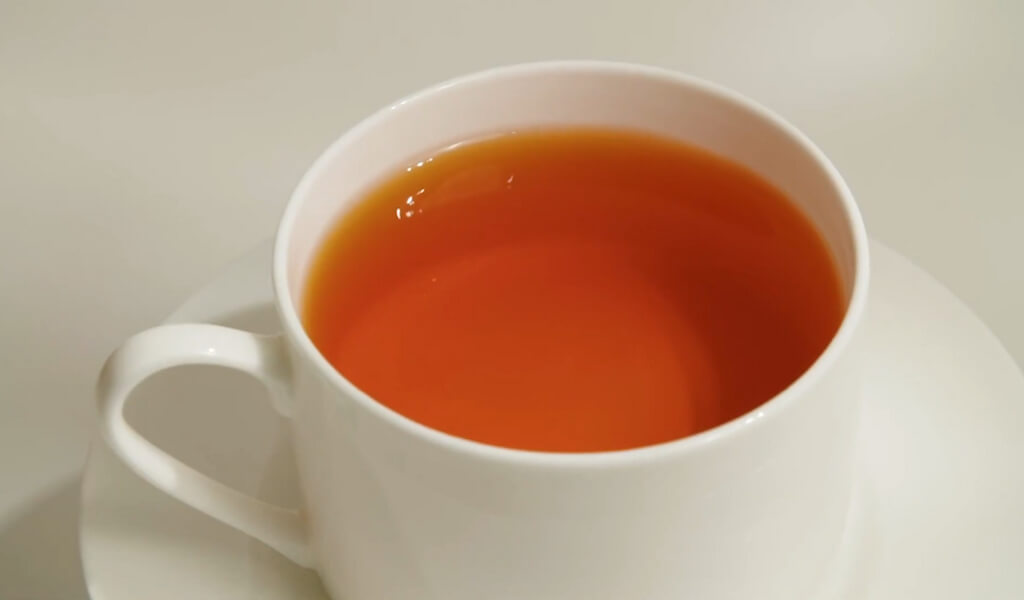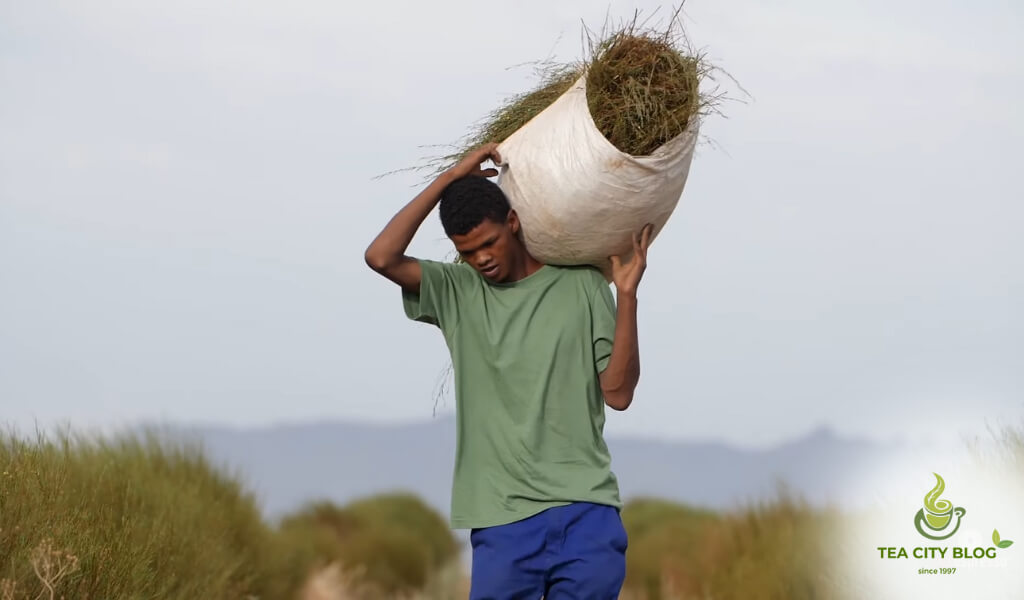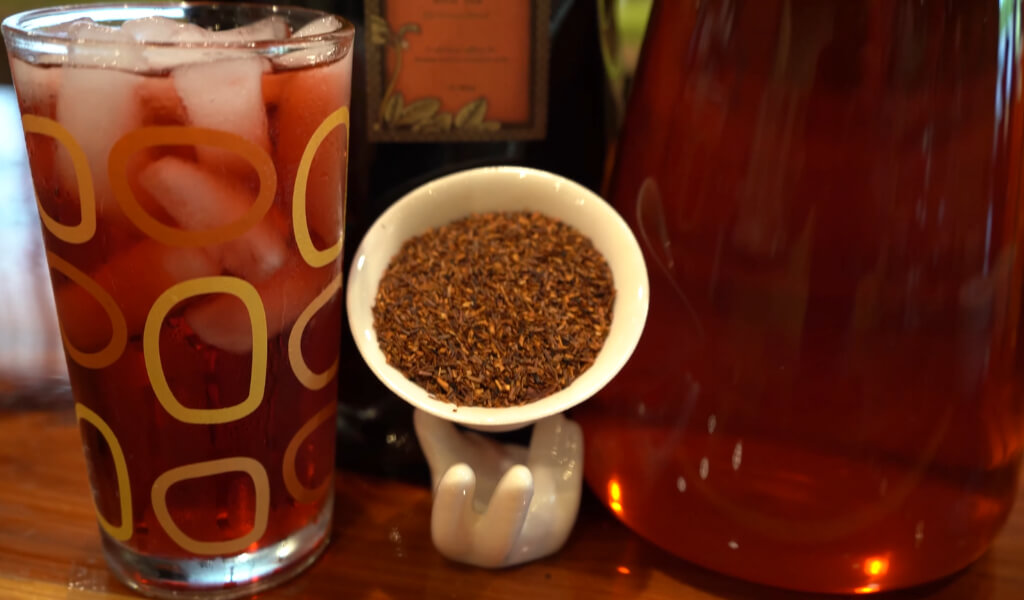If you’re wondering “what is Rooibos tea?” look no further! Whether you’re a tea enthusiast looking for something new or health-conscious in search of a caffeine-free beverage, rooibos tea might be the perfect Caffeine-free tea options.
This article will explore this beloved South African beverage’s sweet and nutty flavor, potential health benefits, and cultural significance.
Quotes of tea at Today
“Each cup of tea represents an imaginary voyage.” ― Catherine Douzel
What is rooibos tea?
Rooibos tea, also referred to as red tea or red bush tea, is produced from the 300-year-old tea rooibos plant native to South Africa. Rooibos isn’t your typical tea – it’s a herb that brews into a delicious reddish-brown infusion, packed with flavor and health benefits. Unlike black and green tea, rooibos is truly one-of-a-kind!
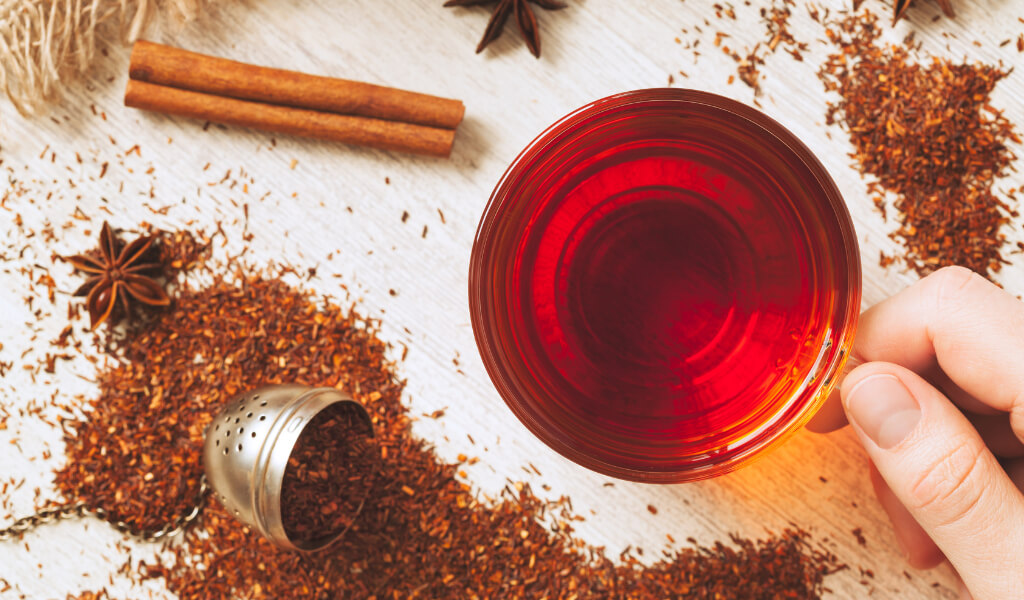
It is often called “African red tea” or “red bush tea” by the tea industry.
Discover the magic of Rooibos tea – the smooth, sweet brew from South Africa that’s taken the world by storm! With a touch of vanilla and a fantastic ability to Rooibos tea blends with any flavor, it’s the ultimate tea experience!
Beyond its flavor, Rooibos tea has been used medicinally in South Africa for generations; now, researchers are looking into Rooibo’s health advantages.
The traditional version of rooibos tea is made by fermenting the leaves, which gives them a reddish-brown hue.
There’s also a green rooibos tea available that’s not fermented. Still, it’s typically more expensive and has a grassier taste than the traditional kind. However, it has more Antioxidants in tea.
Like black tea, organic rooibos tea is usually consumed without additives, but some add milk and sugar.
Additionally, iced tea, espressos, lattes, and cappuccinos made with rooibos tea have also become popular.
Rooibos tea varieties and production
Did you know that there are two main types of rooibos chai tea? They’re called red rooibos and green rooibos, and they both come from the same plant but undergo different production methods.
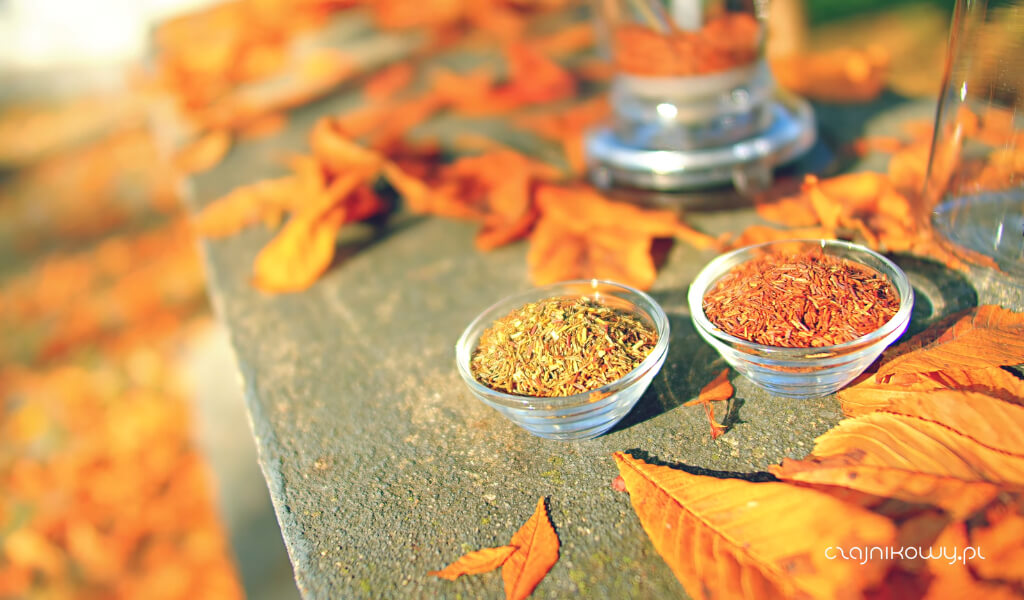
Savor the deep maroon hue of traditional rooibos made by oxidizing picked leaves. It’s the most popular variety, “pure rooibos red tea.” Enjoy the real deal!
On the other hand, green rooibos leaves are not oxidized and go through a process similar to green tea. The leaves are harvested and dried to prevent oxidation.
The leaf ratio determines rooibos tea’s quality to stems in each batch. Higher-quality African rooibos tea has mostly left and tends to have a better flavor, milder aftertaste, and darker color.
Strong Ingredients
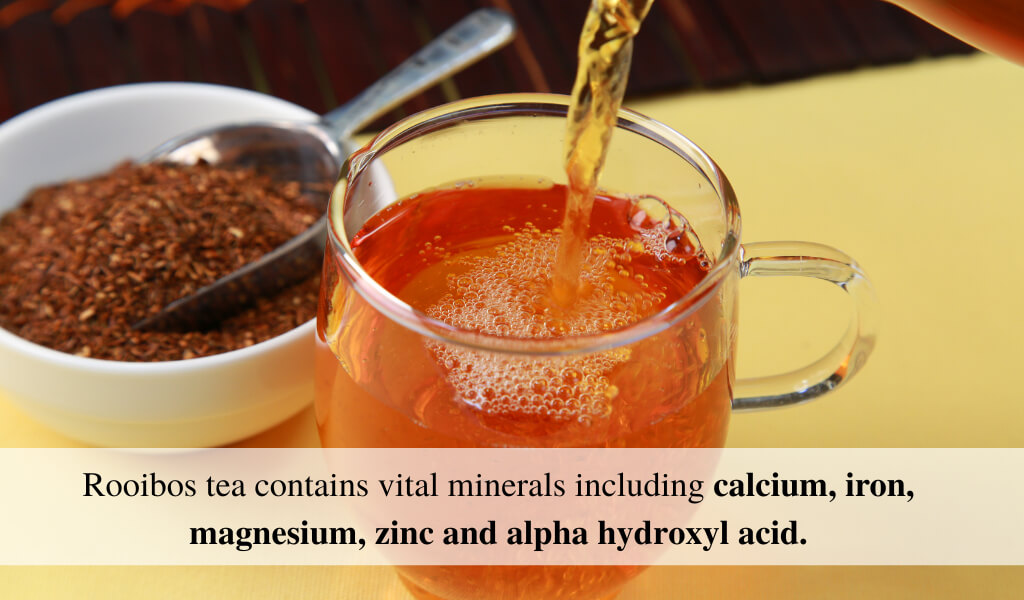
Rooibos tea contains essential minerals like calcium, iron, magnesium, zinc, and alpha hydroxyl acid. Looking to improve your health? Look no further than Rooibos tea! Packed with vitamin C and antioxidants such as astaxanthin, it offers a range of benefits. Plus, its polyphenols fight free radicals, ensuring your body stays strong and resilient.
Create a regular practice of drinking Rooibos tea for a quick and efficient approach to improve your health and well-being.
Note: I learned that while the leaves of the rooibos plant contain a good amount of ascorbic acid (vitamin C), much of this vitamin is lost during the fermentation and brewing process of rooibos tea.
How Rooibos Tea Grow
Rooibos is a tea that can only be grown in the remote Cederberg Mountains, located a few hours north of Cape Town.
Despite many attempts to develop it elsewhere, it has never succeeded. Rooibos is a relatively new addition to the world of tea drinking.
In 1772, the acclaimed Swedish botanist Carl Thunberg discovered a fascinating tradition. As it turns out, the people of the southwestern Cape were brewing tea from a plant related to wild rooibos and honeybush.
These “bush teas” have been a beloved local favorite for centuries, and Thunberg was the first to document their existence.
Dutch settlers in the remote Cape regions brewed tea substitutes from native plants, sparking the creation of rooibos and honeybush. Then, Benjamin Ginsberg, a young Russian from a tea merchant family in Moscow, elevated the production process using techniques akin to those for Chinese oolong and Keemun teas.
After being harvested, the needle-like tips of the bushes are heavily bruised, chopped, and then left to oxidize under the sun.
The History and Origins in South Africa
The cultural significance of rooibos tea in South Africa can be traced back to its long history of use by the indigenous Khoisan people.

Since ancient times, the Khoisan have utilized rooibos tea as a treatment for a variety of illnesses, such as headaches, allergies, and stomach issues.
Along with its therapeutic benefits, rooibos tea has become a crucial component of South African social life. Since it’s a sign of hospitality, it’s a go-to beverage for entertaining visitors and a must during social occasions like weddings, funerals, and festivities.
Rooibos tea has also been crucial to the South African economy, bringing in a sizable sum of money through exports. Tea is now extensively accessible in many nations worldwide, and its popularity is only increasing.
Overall, rooibos tea is a significant cultural icon for South Africa, reflecting the nation’s natural riches, warmth, and tolerance for outsiders.
Read More:
- What is yellow tea and Benefits You Must Know [Update]
- What is Yerba Mate tea? About This Energizing Beverage
- What is Peppermint Tea? Types, Process, Features & Uses
- where does tea come from
- What is Twisted Tea? Origin, Calories, Mugs & More
What is it About Herbal Red Tea that has Captured Our Attention?
The early Dutch settlers in South Africa were big fans of tea but found that imported black tea was too expensive. So, they started brewing rooibos instead. While it took until the 1930s for rooibos to become a popular commercial tea crop, it’s still growing and changing.
Recently, we’ve seen green rooibos, a less oxidized version of the more well-known red rooibos. And there are even more ways to enjoy rooibos now! Revamped in the 2000s, Rooibos now comes in powders, concentrates for cooking and sipping, and extracts for food and cosmetics.
A Unique Crop
Rooibos is a particular type of tea from the mountainous Cederberg region in South Africa, just north of Cape Town.
You’ve got to check out this great area – it’s a biodiversity hotspot with so much to offer! You can explore a World Heritage-protected wildlife sanctuary, marvel at ancient sandstone formations, and even see 6,000-year-old rock art created by the San people. It’s truly a natural wonderland!
Locals have been harvesting and brewing rooibos in this region for centuries. While some are still wild-harvested, commercial growers are now in other parts of the country.
South Africa is the only country that produces rooibos, with over 450 growers producing up to 15,000 tons annually. About 7,000 tons of this is exported to more than 30 countries. The biggest importers are Germany, the Netherlands, Japan, the United Kingdom, and the United States.
Did you know that Rooibos, also called Aspalathus linearis, is a legume plant that loves dry, mountainous areas with some rainfall? It has needle-like leaves and pretty yellow flowers in the spring that turn into legumes containing a single seed. When the seed is ready, it pops out and falls onto the dry ground nearby.
Farmers collect these seeds to start new crops each spring. It takes about 18 months for the rooibos plant to be ready for harvest, typically during South Africa’s summer months.
The Rooibos Tea Process
Rooibos is processed like Camillia sinensis tea, with the bushy plant hand-cut, bundled, sorted, and either cut or bruised for oxidation. This enhances the plant’s essential oils, creating distinct color and flavor.
The redder and sweeter the rooibos, the more oxidized it is. This version is known as red rooibos.
On the other hand, green rooibos is steamed and dried immediately instead of oxidized, so it retains its grassy, mineral-like flavor and slightly green color. Like tea, rooibos is also graded based on its leaf-to-stem content ratio. Higher grades of rooibos have more flavorful leaves and less stem and dust. Check out our how tea is made page for more information on how tea is processed.
How To Use It
Although there are some rooibos tea side effects, Rooibos is an herb used to make a tea-like drink.
Since it doesn’t contain caffeine, it’s a great substitute for individuals who prefer to stay away from caffeinated drinks like tea or coffee.

The flavor of rooibos can be described in many ways, including smoky, sweet, woody, grassy, vanilla, floral, geranium, honey, herbal, and caramel.
Discover the versatility of Rooibos! It’s more than just a tea; it complements your favorite cocktails, iced teas, and lattes. Additionally, Rooibos goes well with a range of foods.
Additionally, some people use rooibos for its reported health benefits and as an ingredient in cosmetics.
Finally, the deep amber-red color of brewed red rooibos can also be used as a natural dye for things like hair, Easter eggs, and fabric for crafts.
How To Store It
Like any other tea or herb, Rooibos needs proper storage to maintain its freshness. While it will be fine, it can become stale and unpalatable. A close cup of Rooibos may taste weak, dusty, or musty – different from what you want!
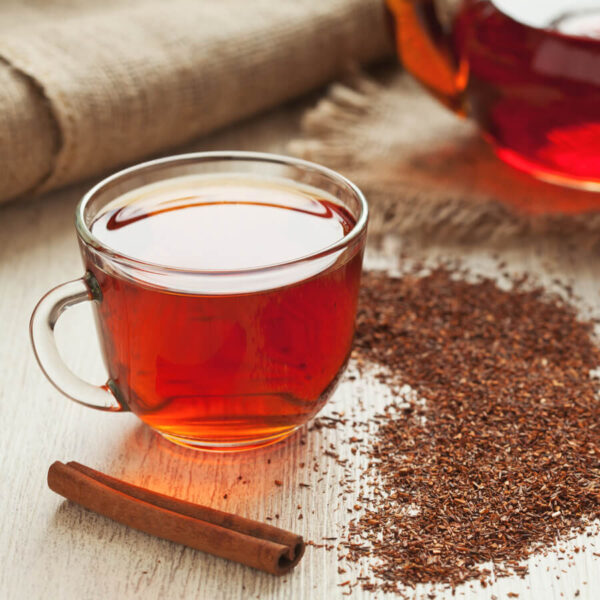
To ensure you get the best quality Rooibos, buy it from a reputable company that can provide information on how and when it was processed and packaged.
For the ultimate Rooibos experience, indulge in it fresh off the press! Rooibos is one tough cookie, thanks to its black tea-like oxidation process. Unlike its delicate counterparts, it can last for up to two years without losing its drinkability.
To keep your Rooibos tea at its best, stash it in a cool, dark hideaway, far from light, air, dampness, and potent pantry pals such as coffee or spices. Follow these tips, and you’ll always have a fresh and delicious cup of Rooibos!
Conclusion
Rooibos tea is a unique and flavorful beverage that offers a wide range of potential health benefits. Whether you’re seeking a caffeine-free alternative to traditional tea or want something new, rooibos tea is a great choice.
With its distinctive taste and impressive nutritional profile, this South African brew will surely become a new favorite among tea drinkers everywhere.
So, why not discover what all the fuss is about?
Please share and rate to support us!
FAQs
Is it OK to drink rooibos tea everyday?
Yes, it’s safe and beneficial to consume rooibos tea daily. Packed with antioxidants and devoid of caffeine, rooibos tea can promote overall well-being without causing any adverse effects typically associated with excessive caffeine intake.
Which is better, green tea or rooibos?
Both green tea and rooibos tea have unique health benefits, making it hard to establish which is superior. While green tea is rich in catechins and known for its anti-inflammatory and antioxidant properties, rooibos stands out with its high mineral content and zero caffeine.
Is rooibos safe for kidneys?
The kidneys are normally safe when drinking Rooibos tea. However, it should be sipped moderately, just like any other beverage. It is a safer alternative for individuals with renal issues since it has less oxalates, which are compounds that can lead to kidney stones.
Can rooibos detox your body?
While rooibos tea is not a detox agent per se, its antioxidant-rich nature can support the body’s natural detoxification process. Maintaining a balanced diet and healthy lifestyle is essential for effective detoxification.
How does rooibos affect the liver?
Rooibos tea is considered beneficial for liver health as its antioxidant compounds can help reduce oxidative stress and inflammation, key contributors to liver disease. However, more research is required in this area.
Pictures of rooibos tea
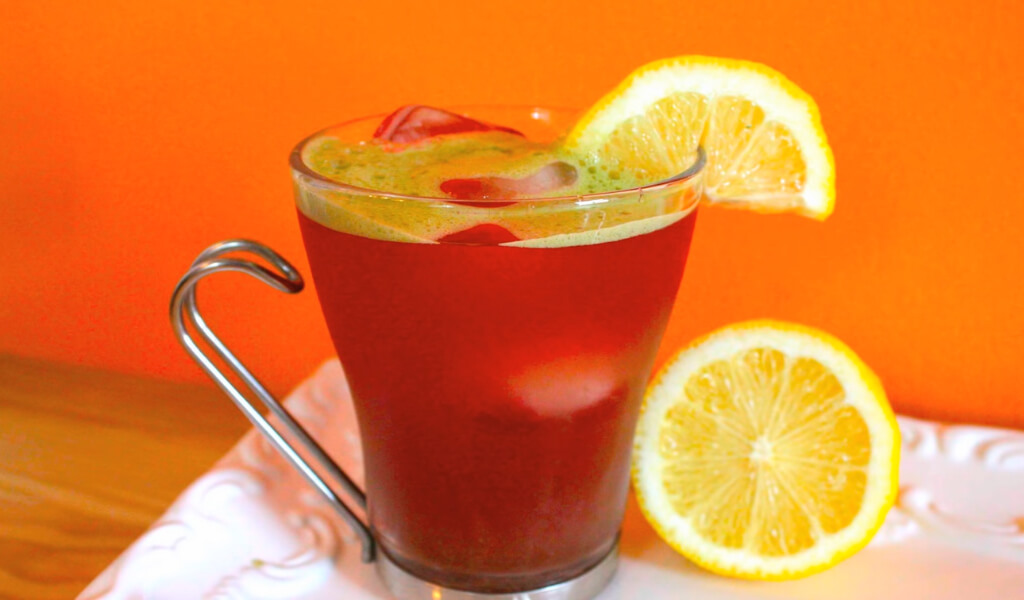
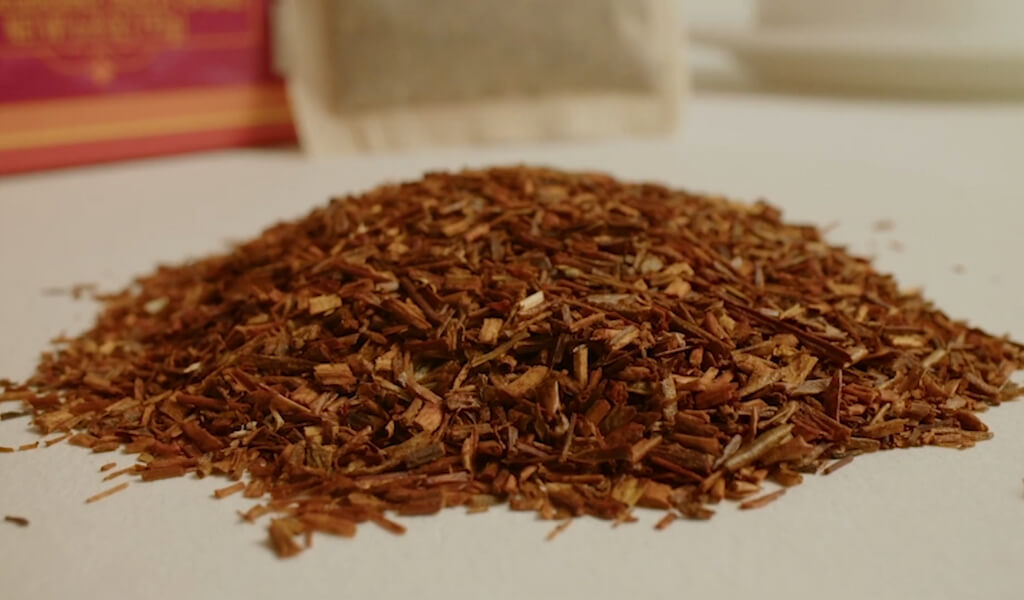
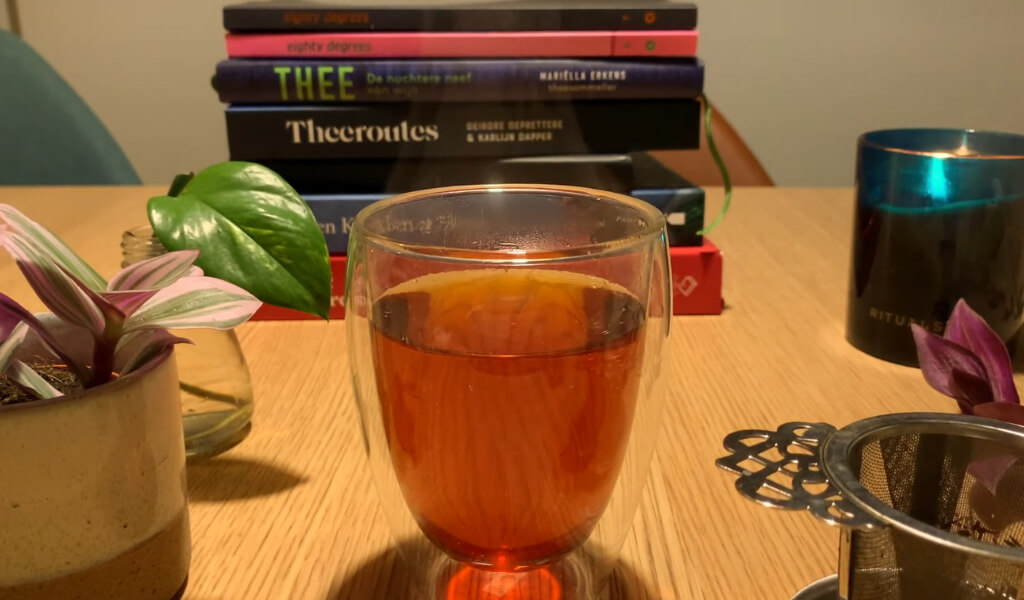
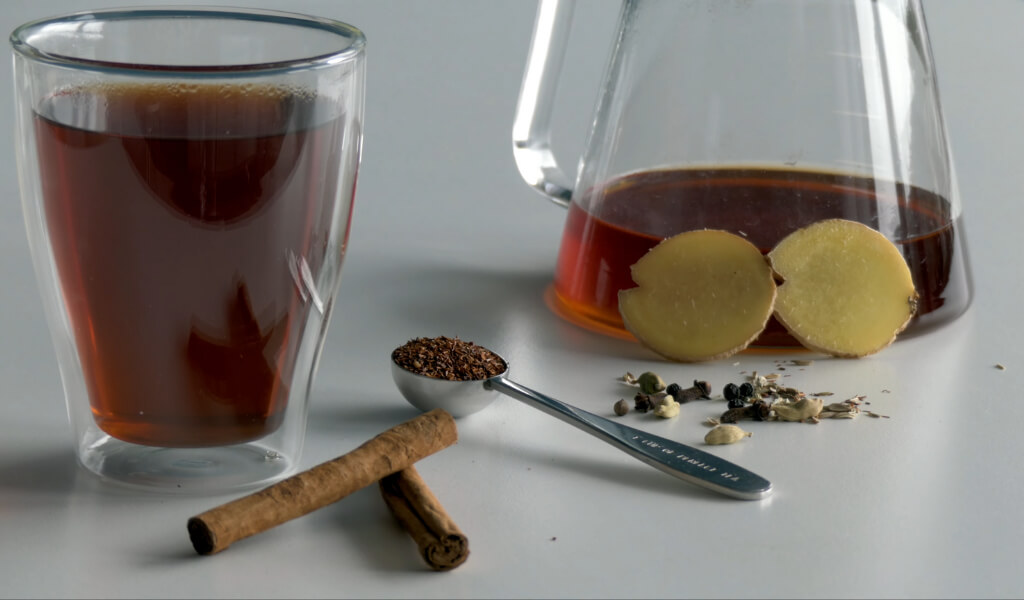
I’m Shanna, creator of Spiritea Drinks. I’m all about teaching people to grow their own food, tea, cook what they harvest, and eat with the seasons.

